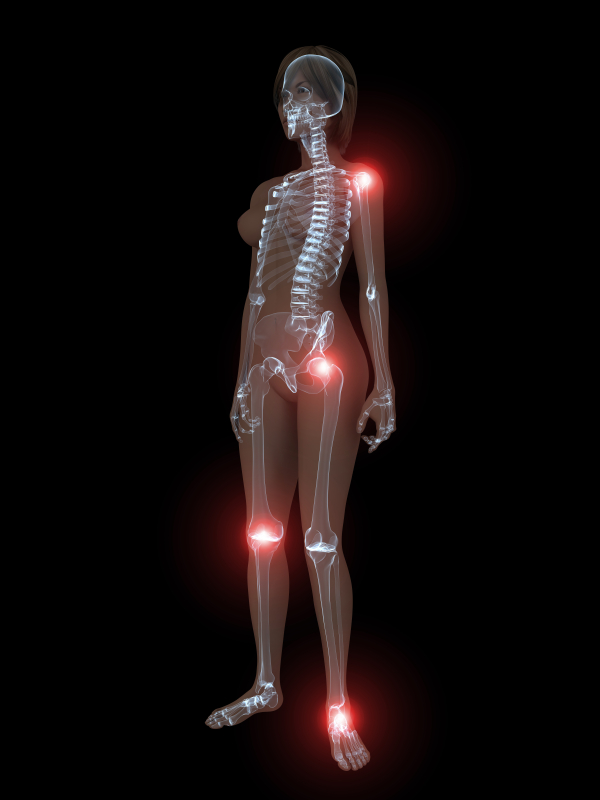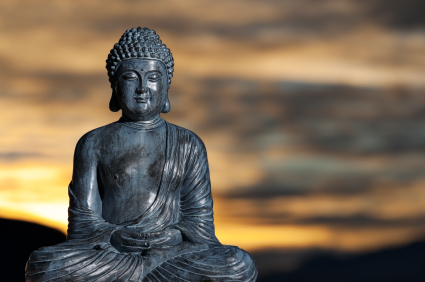Feeling lonely? Meditate!
I spent this past weekend in NYC, the place that I once called home and in my heart of hearts, still do. But as I sat at lunch yesterday and watched people stroll by, I realized that many of them were alone. And I remembered that despite the millions of people in NY, I often felt very much alone there. I don’t feel that way very often any longer and yet, I imagine that it’s not simply a geographically-driven emotion but rather, life changes have a lot to do with loneliness. Indeed, by the time that midlife hits full on, many adults find themselves going through a divorce, losing loved ones to illness and watching their children leave the house for college or to start their lives and careers. Sound familiar? Well, then you might also find the link of these events to loneliness and in turn, to an increased risk of heart disease, depression and even premature death, important.
While the underlying reasons for these associations are complicated, suffice it to say, research suggests that stress can trigger inflammation that has been shown to increase the risk for chronic illness and death. Fortunately, for the first time, there may be a solution: meditation.
Researchers from UCLA say that study findings show that incorporating 30 minutes of daily meditation practice may help to alter the way our genes bolster inflammatory processes in the body by altering feelings of loneliness. Indeed, when people between the ages of 55 and 85 were trained in mindfulness meditation practice, they did more than find inner peace. Here’s the skinny:
Half of the participants participated in a trainer-led, two-hour mindfulness sessions in which they were guided through mindfulness meditation exercises, mindful yoga and stretching, and group discussions that were intended to help promote mindful awareness of the present moment, and moment to moment experience; these sessions were held weekly for eight weeks. They also participated in a day-long retreat towards the end of the study where their practice were more closely integrated and discussed. Additionally, these men and women practiced at least 30 minutes of mindfulness sessions for six days a week during the program.
Mind you, the study was very small and included only 40 participants. However, learning how to live in the present appeared significantly reduce feelings of loneliness and alter both genes and protein markers of inflammatory by as much as 25%, including the signal that activates the inflammatory processes in the body. The researchers say that also observed a decline in C-reactive protein, which has been linked to heart disease.
Loneliness..scientifically, it’s been described as “a state of social distress that arises when there is a discrepancy between one’s desired and actual social relationships.”
I like this description better, from the great Buddhist nun and teacher, Pema Chodron:
Loneliness is “restless and pregnant and hot with the desire to escape and find something or someone to keep us company. When we can rest in the middle [through meditation practice], we begin to have a nonthreatening relationship with loneliness, a relaxing and cooling loneliness that completely turns our fearful patterns upside down.”
Mindfulness meditation. It may alleviate more than heartache and benefit in ways that we have yet to imagine.
Read More
She who laughs…
lasts.
I imagine that the link between laughter and health is no surprise. After all, that deep in your belly, can’t stop it hurts, tears rolling down your face laughter may actually go a lot further than a moment of sheer bliss.
This past weekend, I spent time with friends and family members with whom I can share a good laugh. I can’t tell you how healing and inspiring that was, so much so that I wanted to resurrect and share a post I wrote a few years back…
Several years ago, researchers discovered that humor therapy and anticipation of laughing or being amused (also known as mirthful laughter) positively affects immunity. In fact, findings from a series of five separate studies among healthy men demonstrated that just anticipating watching a funny video could increase beta-endorphins (hormones that elevated mood) as much as 17% and human growth hormone (which contributes to more optimal immunity) by as much as 87%. Elevated hormones levels were maintained throughout the video and as long as 12 hours after. Conversely, hormone levels did not increase in men who who did not anticipate watching a humorous video and instead, browsed magazines.
Similar results were seen in another study among healthy adult women; this time mirthful laughter was associated with significant declines in stress hormones and improvements in natural killer cells, which contribute favourably to immune function.
More recently, researchers have been examining the effects of mirthful laughter on actual disease states. Findings of a year-long study presented at the Experimental Biology Conference in 2009 suggest that watching a funny, 30-minute video on a daily basis may impart a long lasting impact on health that includes:
- Lower stress hormones (epinephrine and norepinephrine) and related stress levels
- Lower levels of inflammation that can contribute to disease
- Significant improvements in HDL cholesterol
- Significant reductions in harmful C-reactive protein levels (a protein that increase the risk for heart disease, heart attack, stroke and death)
This particular study evaluated laughter in patients with diabetes, high blood pressure and high cholesterol who were also taking medication. Notably, similar positive outcomes were not seen in patients who did not have the benefit of watching the funny video.
Simulation laughter also appears to work wonders.
In case you are wondering what I’m referring to, simulated laughter is the foundation of laughter yoga, a worldwide movement that focuses on laughter exercises, including:
- Pantomime followed by laughter
- Physical greetings followed by laughter
- Dancing and singing (and laughing exercises)
- Laughing alone
- Laughing meditations
Simulated laughter works in large groups, in pairs and can be playful or exaggerated. The theory underlying simulated laughter is that while the mind can distinguish between spontaneous and simulated laughter, the body cannot. Importantly, research bears this out, and a number of scientifically controlled studies have shown that simulated laughter can lead to reductions in blood pressure, improvements in stress hormone levels, positively affect depression and insomnia and even improve anxiety in chronic pain patients. Regular simulated laughter sessions can be used as effective coping strategies and benefit workplace morale. Even smiling can yield positive effect.
Can anyone do it? Well, clearly, anyone can laugh. But simulated laughter is a technique that is most effective when it’s learned, practiced and developed. Not surprisingly, laughter yoga clubs have popped up across the nation, touting messages of helping people gain a happiness advantage. And data provide sufficient evidence that ‘laughter has positive, quantifiable physiological and psychological effects on certain aspects of health.”
What can we take away from this work and what does it have to do with menopause? Actually, I’d like to ask, what doesn’t it have to do with menopause and midlife?
During the transition, women are subject to hormonal stressors that affect mood, functioning, wellbeing as well as disease risk. If there are simpler, more natural ways to improve healthy states, for example, by daily laughter, shouldn’t we reach for them? I’d rather take a dose of funny over pharma any given day.
Here’s my gift to you: laugh today. And tomorrow. And the next day. And spread the joy. Nothing like a deep belly laugh to take some of life’s challenges away.
Read More
Achy breaky joints
 Are you consistently achy? Have you been told that you have fibromyalgia? According to research published in Maturitas, not only are middle-aged women prone to achy muscles and joints that might be otherwise known as fibromyalgia, but, those aches and pains may actually be related to hormonal changes. Indeed, when they reanalyzed information collected from over 8,300 women between the ages of 40 and 59, they learned that muscle and joint aches during this time period were significantly related to menopausal symptoms — not only did more than half of the women (63%) suffer from muscle and joint achiness, but, it appeared to double in prevalance in women ages 55 to 59 compared to their younger (40 to 44 year old) peers. Moreover, it tripled in women who were five years into menopause compared to the same group of women.
Are you consistently achy? Have you been told that you have fibromyalgia? According to research published in Maturitas, not only are middle-aged women prone to achy muscles and joints that might be otherwise known as fibromyalgia, but, those aches and pains may actually be related to hormonal changes. Indeed, when they reanalyzed information collected from over 8,300 women between the ages of 40 and 59, they learned that muscle and joint aches during this time period were significantly related to menopausal symptoms — not only did more than half of the women (63%) suffer from muscle and joint achiness, but, it appeared to double in prevalance in women ages 55 to 59 compared to their younger (40 to 44 year old) peers. Moreover, it tripled in women who were five years into menopause compared to the same group of women.
About 16% of these women said that their symptoms were severe or very severe. And importantly, these women tended to display so-called epidemiological characteristics, things like lower socioeconomic status (and by default, less likely to have the means to pay for better healthcare) or a history of psychiatric care. Regardless, there also appeared to be a direct correlation between feeling less healthy and having severe muscle and joint aches. And, women who had surgical menopause carried an even higher risk of presenting with worse joint symptoms.
Study findings also showed that the more intense menopause symptoms were, the more severe muscle and joint aches appeared to be; up to 60% of women with severe vasomotor symptoms also reported severe to very severe aches and pains.
It is possible that the central nervous system has some sort of role, as it impacts both symptoms and joint and muscle pains. Another commonality is that among women with fibromyalgia, symptoms like weakness, anxiety and insomnia — also seen during menopause — are present.
So where are the holes? Because of the study design, there is no cause and effect conclusion at play; in other words, researchers can’t unequivocally say that menopause causes aches and pains. Moreover, the tools used to evaluate muscle and joint pain are actually the same as those relied on to evaluate menopausal symptoms, which means that accuracy may come into question. Still, what they did learn is that hormone therapy reversed or lessened pain severity, meaning that menopause does appear to play some sort of role.
Meanwhile, if you are feeling especially achy and you are in the throes of menopause, it is very possible it’s not in your head. Talk to your practitioner, And consider mind-body strategies such as meditation, QiGong and yoga, which have been correlated with reductions in pain.
Read MoreWednesday Bubble: cultivate your inner lotus
[Photo credit: Priya Ramesh, Coorg India. 2013]
On Monday, I shared information about the benefits of mindful meditation and being present and how they positive affected stress and the hormone cortisol. I cannot stress the importance of incorporating stress busters into your life; not only is your mental health at stake but the risks to your overall health are numerous. If meditation is not your thing, there are other strategies to consider, including yoga, Tai Chi, acupuncture and deep breathing. There is also Qigong.
Qigong is a Chinese practice harkening back more than 4,000 years. In many ways, it incorporates the best of several strategies, including alignment of movement and breath, meditation and yoga (strength, flexibility). My friend and colleague, Jeri Hemerlein, teaches a female-specific form of Qigong at the Yoga Center in Columbia, MD. Known as Radiant Lotus Qigong, Jeri describes it as a flowing form combining ancient Chinese and Tibetan techniques to health issues unique to women. Radiant Lotus Qigong uses the lotus flower as a metaphor for female resilience and flexibility. The movements open the body’s energy, gently stretching and releasing tension from muscles, joints and spine while waking up the immune system. The form seeks to enhance the whole body health of women from menstruation to post menopause, while supporting the Divine Feminine nature and helping the woman return to an innate state of loving compassion, wisdom and inner strength during times of stress and intense emotions. The form was created by Advance Qigong practitioner Daisy Lee, who developed it after studying with various Qigong teachers who were able to successfully address women-specific issues through original and individual forms.
If you visit Daisy’s website, you can learn more. Or, if you are local to the DC/MD area, you can attend a workshop that I am blessed to be giving with Jeri on April 23, 2013 at 6:30 pm in Annapolis. ‘Cultivate Your Inner Lotus: Menopause, Stress & Qigong” aims to help you gain a better understanding of stress during menopause and provide you with specific techniques to address it on your own. I hope that you’ll consider joining us.
Cultivating your inner lotus may be the best thing you can do for yourself.
Read More
Make ‘Em Laugh
“Don’t you know everyone wants to laugh?”
Truly, is there anything better than a deep, uncontrollable, tear streaming down your face, belly aching laugh?
However, besides the sheer joy that laughter brings, did you know that it also lowers stress and benefits the heart and boosts immunity? Laughter reduces tension and anxiety, raises self esteem, hope, energy, enhances memory and creativity, improves interpersonal interactions, builds unity and solidarity. Laughter is essential to happiness and overall wellbeing. Laughter positively affects our muscles, our breathing, our hormones and our nervous systems. In fact, at its core, laughter incorporates the entire mind-body construct. Moreover, although laughter is contagious, it has few side effects.
Yet, does simulated laughter yield the same benefits?
In case you are wondering what I’m referring to, simulated laughter is the foundation of laughter yoga, a worldwide movement that focuses on laughter exercises, including:
- Pantomime followed by laughter
- Physical greetings followed by laughter
- Dancing and singing (and laughing exercises)
- Laughing alone
- Laughing meditations
Simulated laughter works in large groups, in pairs and can be playful or exaggerated. The theory underlying simulated laughter is that while the mind can distinguish between spontaneous and simulated laughter, the body cannot. Importantly, research bears this out, and a number of scientifically controlled studies have shown that simulated laughter can lead to reductions in blood pressure, improvements in stress hormone levels, positively affect depression and insomnia and even improve anxiety in chronic pain patients. Regular simulated laughter sessions can be used as effective coping strategies and benefit workplace morale. Even smiling can yield positive effect.
Can anyone do it? Well, clearly, anyone can laugh. But simulated laughter is a technique that is most effective when it’s learned, practiced and developed. Not surprisingly, laughter yoga clubs have popped up across the nation, touting messages of helping people gain a happiness advantage. And data provide sufficient evidence that ‘laughter has positive, quantifiable physiological and psychological effects on certain aspects of health.”
Make em laugh? You bet:
Ah ha ha ha ha ha há
Ah ha ha ha ha ha
Ah ha ha ha ha ha ha
Ah ha ha ha ha ha ha ha ha
Make ’em laugh, ah ah!
Make ’em laugh, ah ah!
Make ’em laugh, ah ah!
Make ’em laugh
Make ’em laugh
Make ’em laugh!
-Donald O’Connor, Singin’ in the Rain
Read More








